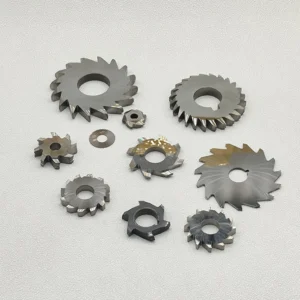Table of Contents
ToggleTungsten Circular Saw Blades
When it comes to woodworking, construction, or metalworking, the right tools make all the difference. One of the most critical tools in any workshop is the circular saw, and at the heart of this powerful device is the blade. Tungsten circular saw blades are often heralded as the ultimate choice for various cutting projects. But with so many options available, how do you choose the best tungsten circular saw blades for your needs? In this article, we’ll delve into the factors you should consider when selecting these crucial tools and explore why they’re worth the investment.
Understanding Tungsten Circular Saw Blades
To start off, it’s essential to understand what makes tungsten circular saw blades unique. These blades are typically made with carbide tips containing tungsten, a metal known for its high melting point and exceptional durability. This means they can withstand rigorous cutting tasks, making them ideal for both professionals and DIY enthusiasts.
For instance, if you’re a carpenter working on a large project that involves cutting through hardwood regularly, tungsten circular saw blades provide the longevity and precision you need. Unlike standard steel blades, which wear down quickly, tungsten blades can maintain their sharpness and efficiency over time, allowing you to achieve cleaner cuts without frequent replacements.
Key Features
Blade Material and Construction
When purchasing tungsten circular saw blades, the construction of the blade is paramount. Not all tungsten blades are created equal. Some feature different grades of tungsten carbide, which can affect cutting performance. For example, a blade made from high-grade tungsten carbide can easily slice through tough materials like plywood, MDF, or even metals, while a lower-grade blade might struggle, leading to rough cuts or overheating.
Tooth Count and Design
Another critical aspect to consider is the tooth count and design of the blade. More teeth generally result in cleaner cuts, while fewer teeth can handle thicker materials but may leave a rougher finish. If you’re cutting through laminate or softwoods for finishing work, a blade with a high tooth count (like 80 or more) might be ideal. On the other hand, if you’re tackling a tougher job like framing or cutting through thicker wood, a blade with fewer teeth (around 24 to 40) would be preferable.
For instance, a tungsten circular saw blade with 60 teeth is an excellent all-rounder, suitable for general-purpose use. It strikes the right balance between speed and finish quality, making it perfect for both carpenters and builders.
The Right Size
Size matters when it comes to circular saw blades. Most standard circular saws accommodate blades with diameters ranging from 6.5 inches to 12 inches. However, it’s essential to match the size of the blade with the specifications of your saw and the materials you intend to cut. Selecting the wrong size can lead to inefficiencies and even potential hazards. Always check your saw’s manual for the maximum endorsed blade size before making your purchase.
Application Areas
Woodworking
Tungsten circular saw blades shine in woodworking projects. Their durability allows craftsmen to create intricate designs and clean cuts without worrying about the blade degrading. For example, a professional cabinetmaker can use these blades to ensure that cabinet doors and drawers fit perfectly, maintaining a high level of craftsmanship.
Metal Cutting
In addition to woodworking, tungsten circular saw blades are versatile enough for metal cutting. Whether you’re working on a DIY project that requires cutting metal sheets or pipes, the robustness of tungsten blades allows you to slice through these materials with ease. This multi-functionality can save you the hassle of purchasing separate blades for different tasks.
Masonry Work
Tungsten circular saw blades also excel in masonry work. When cutting through bricks or concrete, having a durable blade is essential. The toughness of tungsten means that these blades can withstand the rigors of masonry projects, ensuring that you achieve precise cuts without jeopardizing safety or the blade’s integrity.
Cost vs. Quality
Budget is often a consideration when purchasing tools, and tungsten circular saw blades can be pricier than their non-tungsten counterparts. However, when weighing the cost against the benefits, you might find that the investment pays off in the long run. These blades typically last significantly longer and perform more efficiently, which can reduce the need for frequent replacements.
For example, consider a construction contractor who invests in high-quality tungsten circular saw blades. Rather than frequently replacing cheaper blades, this contractor can focus on their projects, confident that their blades will perform optimally throughout the job. Over time, the savings in replacement costs can make tungsten blades the more economical choice.
Final Thoughts
Choosing the best tungsten circular saw blades for your projects requires careful consideration of various factors, including blade material, construction, tooth count, and size. Whether you’re involved in woodworking, metal cutting, or masonry work, the benefits of investing in high-quality tungsten circular saw blades are immense. They provide durability, versatility, and efficiency, making them a valuable addition to your toolset.
In conclusion, if you’re serious about your projects and want tools that can handle demanding tasks, don’t overlook the power of tungsten circular saw blades. They may seem like a substantial investment initially, but the long-term benefits they offer — from clean cuts to their ability to tackle tough materials — can greatly enhance the quality of your work and the enjoyment of your craft.
